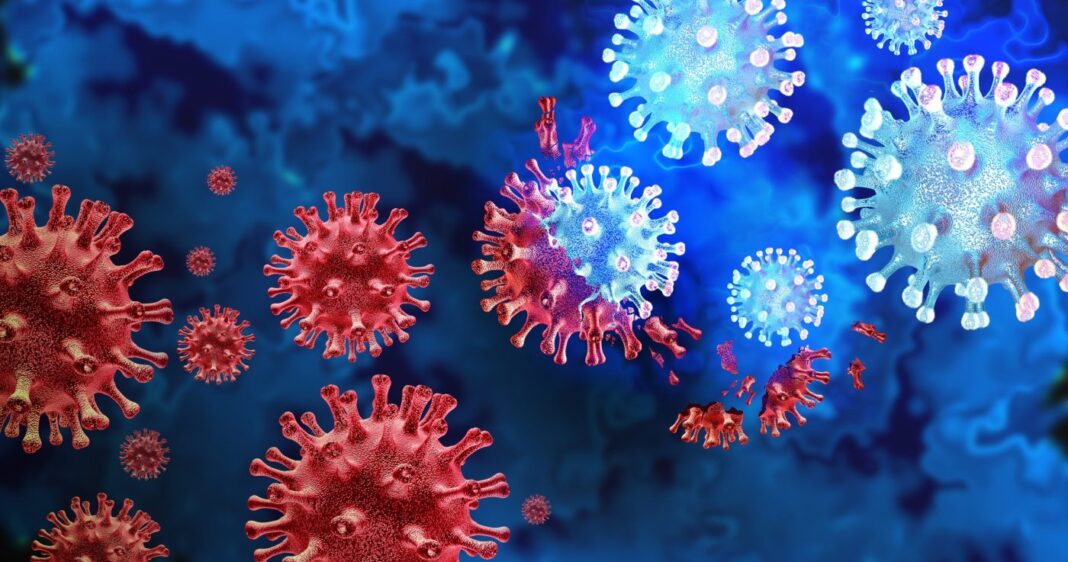A research team reports discovering a neutralizing monoclonal antibody that it says has the potential to become a universal coronavirus therapy against SARS-CoV-2 and all its variants of concern, including Beta, Gamma, Delta, Epsilon and Omicron.
In multiple animal models, the mAb shows effectiveness against the SARS-CoV, the Severe Acute Respiratory Syndrome that emerged in China in 2002, and MERS-CoV, the Middle East Respiratory Syndrome that appeared in Saudi Arabia in 2012, according to the scientists, who had that it also shows effectiveness against several common cold coronaviruses.
The mAb targets the S2 stalk region of the viral spike (S) protein that is highly conserved among beta-coronaviruses yet is also essential for the virus to attach and enter cells, leading to infection. The mAb protected against infections when given as an intraperitoneal injection or a nasal dose.
The study “Potent universal beta-coronavirus therapeutic activity mediated by direct respiratory administration of a Spike S2 domain-specific human neutralizing monoclonal antibody” appears in PLOS Pathogens.
“Severe Acute Respiratory Syndrome Coronavirus-2 (SARS-CoV-2) marks the third novel β-coronavirus to cause significant human mortality in the last two decades. Although vaccines are available, too few have been administered worldwide to keep the virus in check and to prevent mutations leading to immune escape. To determine if antibodies could be identified with universal coronavirus activity, plasma from convalescent subjects was screened for IgG against a stabilized pre-fusion SARS-CoV-2 spike S2 domain, which is highly conserved between human β-coronavirus,” write the investigators.
Human monoclonal antibodies developed
“From these subjects, several S2-specific human monoclonal antibodies (hmAbs) were developed that neutralized SARS-CoV-2 with recognition of all variants of concern (VoC) tested (Beta, Gamma, Delta, Epsilon, and Omicron). The hmAb 1249A8 emerged as the most potent and broad hmAb, able to recognize all human β-coronavirus and neutralize SARS-CoV and MERS-CoV. 1249A8 demonstrated significant prophylactic activity in K18 hACE2 mice infected with SARS-CoV-2 lineage A and lineage B Beta, and Omicron VoC. 1249A8 delivered as a single 4 mg/kg intranasal (i.n.) dose to hamsters 12 hours following infection with SARS-CoV-2 Delta protected them from weight loss, with therapeutic activity further enhanced when combined with 1213H7, an S1-specific neutralizing hmAb. As little as 2 mg/kg of 1249A8 i.n. dose 12 hours following infection with SARS-CoV Urbani strain, protected hamsters from weight loss and significantly reduced upper and lower respiratory viral burden.
“These results indicate in vivo cooperativity between S1 and S2 specific neutralizing hmAbs and that potent universal coronavirus neutralizing mAbs with therapeutic potential can be induced in humans and can guide universal coronavirus vaccine development.”
The mAb, and mAb discovered earlier by the researchers, are being developed as a therapeutic cocktail for COVID-19 under license to Aridis Pharmaceuticals.
“SARS-CoV-2 marks the third time in the last two decades a beta-coronavirus has caused significant mortality in humans,” says James J. Kobie, PhD, co-senior study author from the University of Alabama at Birmingham. “SARS-CoV-2 has caused the most infections and deaths worldwide. New variants pose the risk of evading the immune system, even in vaccinated and previously infected individuals, and there remains the potential for other genetically distinct coronaviruses to emerge as new pandemic strains in the future.
“For these reasons, finding new therapeutic and prophylactic drugs and vaccine strategies that have universal activity against the coronavirus is essential for protecting humanity against the current and future beta-coronavirus outbreaks or pandemics.”
Vaccines and other monoclonal antibodies against SARS-CoV-2 have focused on the receptor-binding domain, or the RBD, located at the heads of the S viral protein spike that projects from the surface of the virus. Each virus has 24 to 40 spikes. The RBD is good at eliciting an immune response, but that portion of the S permits many mutations that can let the virus escape antibodies.
One key in the present research was finding an antibody target on a part of the spike called the S2, or the stalk region. This region is highly conserved and only rarely mutates because that would disrupt its essential function. After the RBD at the head of the S attaches the coronavirus to a receptor molecule on the surface of a target cell, the S2 stalk acts to bring the virus inside the target cell. There the virus replicates, killing the cell, and releasing a hoard of new, infectious virions.
Aridis is using the two hmAbs in its AR-701 cocktail designed for inhaled delivery. AR-701 is engineered for long-acting effectiveness, potentially lasting a year or more when used in humans, according to the company.
Also involved in the study are researchers from the Texas Biomedical Research Institute and Colorado State University.



